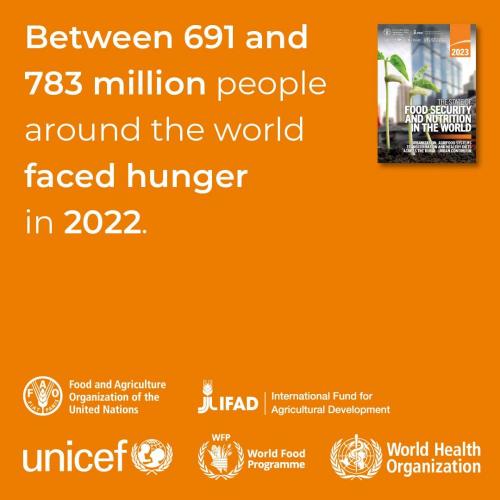
https://data.unicef.org/resources/sofi-2023/
In an increasingly urbanized world grappling with the aftermath of a global pandemic and major geopolitical conflicts, our global food systems face unprecedented challenges. The State of Food Security and Nutrition in the World 2023, launched on 12 July 2023, provides a comprehensive overview of these complexities. This report captures the state of global hunger, malnutrition, and the rapidly changing dynamics of food security. Urbanization, once thought to blur the lines between rural and urban food accessibility, is now drastically reshaping food systems and affecting the availability and affordability of healthy diets.
The report brings to light several pivotal issues:
Global Hunger: The number of people experiencing hunger worldwide reached between 690 and 783 million in 2022, a stark increase of 122 million people compared to pre-pandemic figures.
Access to Healthy Diets: Approximately 2.4 billion individuals, largely women and residents of rural areas, did not have consistent access to nutritious, safe and sufficient food in 2022.
Child Malnutrition: Child malnutrition is still high. In 2022, 22.3 per cent (148 million) children under age five were stunted, 6.8 per cent (45 million) were wasted and 5.6 per cent (37 million) were overweight.
Urbanization's Impact on Diet: As urbanization accelerates, there is a noticeable increase in the consumption of highly-processed and convenience foods, leading to an increase in overweight and obesity rates across urban, peri-urban and rural areas.
Rural Dependence on Global Markets: Previously self-sustaining rural regions, especially in Africa and Asia, are now found to be increasingly dependent on national and global food markets.
Future Outlook: By 2050, it's projected that 70 per cent of the global population will live in cities. This significant demographic shift necessitates a reorientation of food systems to cater to these new urban populations and eradicate hunger, food insecurity and malnutrition.










Add new comment